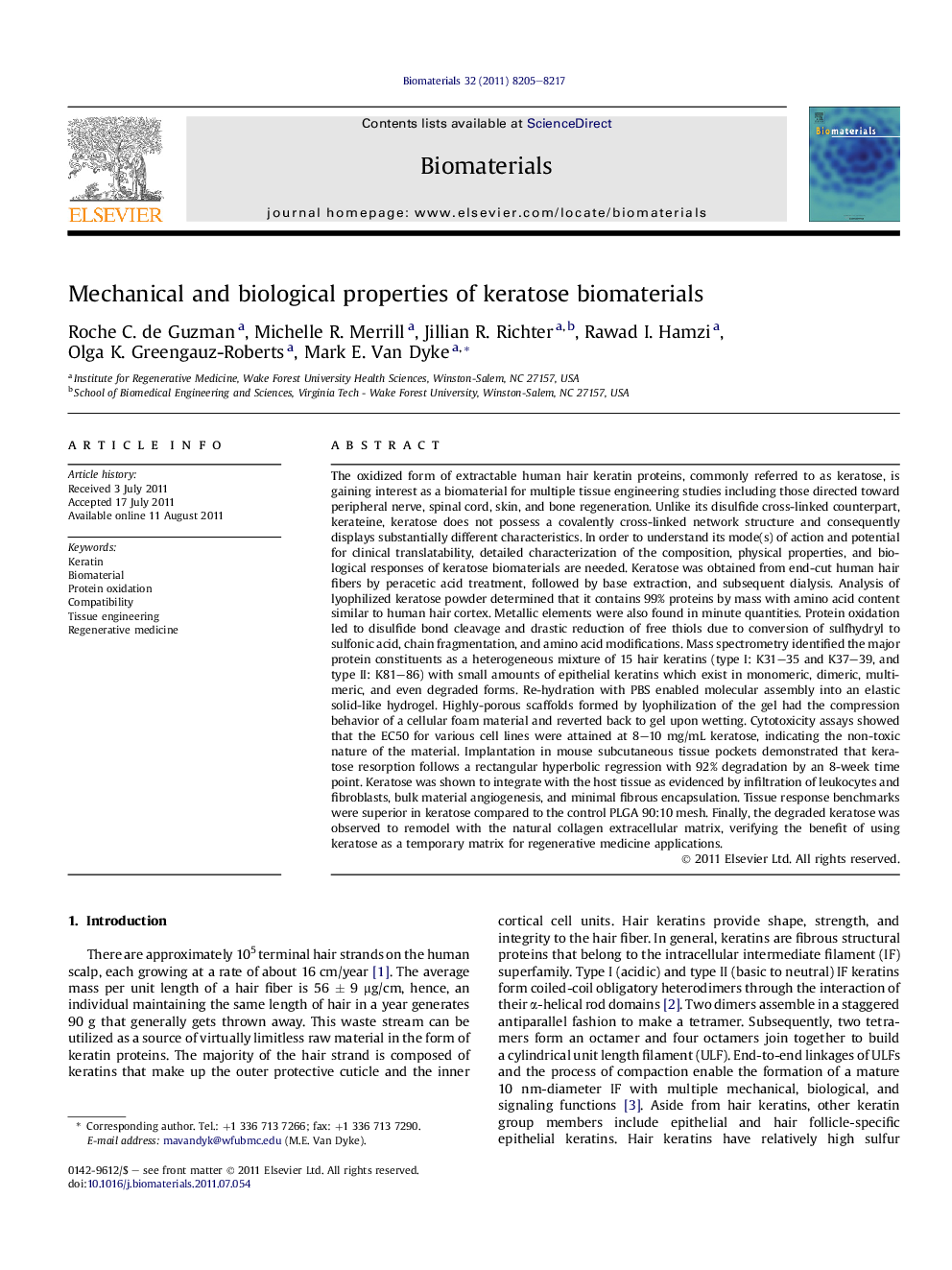| کد مقاله | کد نشریه | سال انتشار | مقاله انگلیسی | نسخه تمام متن |
|---|---|---|---|---|
| 8009 | 573 | 2011 | 13 صفحه PDF | دانلود رایگان |

The oxidized form of extractable human hair keratin proteins, commonly referred to as keratose, is gaining interest as a biomaterial for multiple tissue engineering studies including those directed toward peripheral nerve, spinal cord, skin, and bone regeneration. Unlike its disulfide cross-linked counterpart, kerateine, keratose does not possess a covalently cross-linked network structure and consequently displays substantially different characteristics. In order to understand its mode(s) of action and potential for clinical translatability, detailed characterization of the composition, physical properties, and biological responses of keratose biomaterials are needed. Keratose was obtained from end-cut human hair fibers by peracetic acid treatment, followed by base extraction, and subsequent dialysis. Analysis of lyophilized keratose powder determined that it contains 99% proteins by mass with amino acid content similar to human hair cortex. Metallic elements were also found in minute quantities. Protein oxidation led to disulfide bond cleavage and drastic reduction of free thiols due to conversion of sulfhydryl to sulfonic acid, chain fragmentation, and amino acid modifications. Mass spectrometry identified the major protein constituents as a heterogeneous mixture of 15 hair keratins (type I: K31–35 and K37–39, and type II: K81–86) with small amounts of epithelial keratins which exist in monomeric, dimeric, multimeric, and even degraded forms. Re-hydration with PBS enabled molecular assembly into an elastic solid-like hydrogel. Highly-porous scaffolds formed by lyophilization of the gel had the compression behavior of a cellular foam material and reverted back to gel upon wetting. Cytotoxicity assays showed that the EC50 for various cell lines were attained at 8–10 mg/mL keratose, indicating the non-toxic nature of the material. Implantation in mouse subcutaneous tissue pockets demonstrated that keratose resorption follows a rectangular hyperbolic regression with 92% degradation by an 8-week time point. Keratose was shown to integrate with the host tissue as evidenced by infiltration of leukocytes and fibroblasts, bulk material angiogenesis, and minimal fibrous encapsulation. Tissue response benchmarks were superior in keratose compared to the control PLGA 90:10 mesh. Finally, the degraded keratose was observed to remodel with the natural collagen extracellular matrix, verifying the benefit of using keratose as a temporary matrix for regenerative medicine applications.
Journal: Biomaterials - Volume 32, Issue 32, November 2011, Pages 8205–8217